In this article, we have a head-to-head battle between two high-end VR headsets that are aimed at the more demanding enthusiast VR consumer – the HTC Vive Cosmos Elite and the Valve Index. Which of the two headsets will prevail? Well, this is exactly what we going to find out!
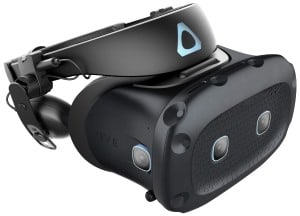
Too Expensive For What It Is
HTC VIVE Cosmos Elite

Headset Type: PC-Tethered
Display Type: LCD (RGB Stripe)
Resolution: 1440 × 1700 (per eye)
Refresh Rate: 90 Hz
Field of View: ~110 °
IPD Adjustment: +
Tracking: External Base Stations, SteamVR 1.0 (6 DoF)
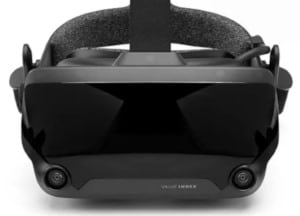
Excellent All-Arounder
Valve Index

Headset Type: PC-Tethered
Display Type: LCD (RGB Stripe)
Resolution: 1440 × 1600 (per eye)
Refresh Rate: 120 Hz (144 Hz in Experimental mode)
Field of View: ~130 °
IPD Adjustment: +
Tracking: External Base Stations, SteamVR 2.0 (6 DoF)
GAMES & CONTENT

With HTC Vive Cosmos Elite you will have access to HTC´s own ecosystem called VivePort as well as the SteamVR library. HTC also often bundles its headsets with special offers.
At the moment, if you buy the Elite Cosmos, you get a free copy of Half-Life: Alyx, plus a 6-month subscription to VivePort Infinity. The Latter gives you unlimited access to 700+ games and experiences.
While in theory, this all sounds nice, VivePort to me is not the most intuitive (and stable) environment to use. It also hasn`t been able to catch any of the big titles and seems more of an experimental playground for developers.
What is also confusing, is the fact that while the Cosmos Elite is built around Viveport (default), it actually can not function without SteamVR. To use either one, you sort of have to navigate back and forth between the two and it makes everything confusing.

As Index is developed by Valve, you know very well what you will be getting – SteamVR. And that is totally fine. Although developed for PC gaming at first, Steam has silently evolved into a VR gaming powerhouse which is the preferred option for many (over Oculus and Viveport)
Like with the Cosmos Elite, when you currently buy the headset, you get a free Half-Life: Alyx added to the package which is one of the best VR games ever created.
If you want, you also have access to Viveport with the Index. However, I sincerely doubt that anyone would choose Viveport over SteamVR. Well, maybe only if you had a free Viveport subscription lying around. Maybe.
Points deducted for the fact that you are going to have to do some fiddling with controllers settings for many of the Oculus titles to get them working properly.
VISUALS

When I`d have to conclude the display and visual quality of the Cosmos Elite (compared against the Index), it would be the following: “Good, but not good enough”
The headset comes with dual LCD displays (RGB stripe layout) that are able to output a resolution of 1440 × 1700 per eye. Although there are 100 more vertical pixels than the Index, in reality, you can not really perceive them.
The screen door effect on the Cosmos Elite is minimized, but still more prominent than on the Index. The same goes for pixel fill which is again better on the Index. The visuals just feel better overall on Valve`s flagship headset.
Do notice, that I am nitpicking here. The display on the Cosmos Elite is really very good. It is just that the Index, as its direct competitor, has set the bar really high.

When it comes to the overall visual specs and the “feeling” you get, the Index is clear winner for me.
To start with, Valve Index has a larger visual sweet spot area which is both easier to find and maintain while playing. When in the “sweet spot”, the Valve Index and Cosmos Elite both have very good edge-to-edge clarity and the image gets blurry on the very edges of the screen.
Index also has an “Eye relief knob”, which lets you bring the lenses very close to your eyes. This assures you can get the max FOV out of the headset (up to ~130 ° ). On the Cosmos Elite, you just get the feeling of wanting the lenses closer to your eyes but unable to do so.
Valve Index also has a higher screen refresh rate than the Cosmos Elite (144Hz vs 90Hz). Although in reality you probably won`t feel the difference that much (unless in really fast-paced games), the Index still has an edge here too.
COMFORT


HTC decided to go with a “Halo” style head strap for the Cosmos Elite. This kind of solution can work really well, as the Rift S has demonstrated for example
However, with the Cosmos Elite, it is a bit troublesome to find a comfortable fit. I just wish the strap had more angle to it, so you could cup it snugly behind your head.
Currently, if you secure the back of the strap comfortably behind your head, you will actually lose the visual sweet spot. And if you move the strap higher (so that it is placed properly in terms of visual clarity), it feels as if the headset is not secured tightly enough.
Sure, there is also a dial on the back of the strap to adjust the tightness of the headset around your head. And if you set the strap tight, it sort of fixes the “wobbliness” problem. However, even with all the nice padding, the headset will become uncomfortable to wear and you will feel pressure and strain on your face.
A nice added comfort feature for the Cosmos Elite is that you can flip the headset visor up and off your eyes to see the “real world”. This is actually quite useful, as with all other VR headsets you have to remove them completely (and then later put back on and readjust).
Overall, although the idea was good, with the current implementation you sort of have to choose between comfort and visual clarity. Not a good place to be.

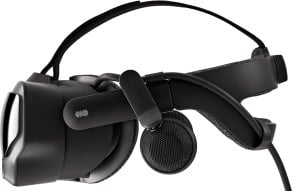
Valve has made a really nice job with the Index when it comes to comfort. Even though the headset is quite heavy, the weight is balanced evenly on your head and the Index is super comfortable to wear even for prolonged periods.
Part of it has to do with the soft padding added both to the headset as well as the strap itself, which feels super comfortable.
However, the biggest contributor to the comfort is a much better thought-out head strap design, compared to the Cosmos Elite.
With the Index, you are able to rotate the strap up and down (something the Elite was missing) and find the perfect position to cup it behind the back of your head. Once the headset is in place, you secure it slightly with the “tightness” knob on the back and you are ready to go.
For me, Valve Index is a clear winner over Cosmos Elite when it comes to comfort and overall fit of the headset.
TRACKING

Tracking issues were the biggest culprit of the original Vive Cosmos. Initially, there were just too many blind spots, problems with lightning sensitivity and slow recovery time of the controller tracking.
With the Cosmos Elite faceplate, HTC has gone back to external tracking with SteamVR 1.0 base stations. Does this mean the tracking problems are now solved?
Yes, indeed! For regular room-scale usage, it is hard to find any faults and the tracking works pretty much perfectly as you would expect from SteamVR tracking solution

Valve Index also utilizes external base stations to manage the tracking of the headset and controllers. And like with the Cosmos Elite, the tracking accuracy is spot on.
The difference is that the Index comes with the second generation SteamVR base stations instead of the 1.0 version that Cosmos Elite ships with.
The main difference between the 1st and 2nd generation base stations is the play area they are able to cover. However, you will really only benefit from 2.0 base stations if you are playing on a really large open floor. For 99% of the users and room sizes, the 1st gen base stations will do just as well.
CONTROLLERS

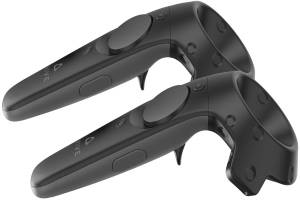
Unlike the original Cosmos which has its own custom controllers, the Cosmos Elite ships with the original HTC Vive Wands.
The likeability and fit of different controllers is quite subjective. Those who started with the Wands and grew used to them might say they are excellent (and better than Oculus Touch or the Valve knuckle controllers). And who can fault them?
However, for many VR gamers, the Wands feel awkward to hold, the touchpad is inaccurate at times and different components of the controllers are reported quite prone to breaking.

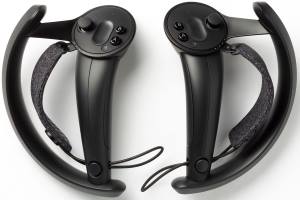
Valve Index “knuckle” controllers have also had some technical problems, with the most well-known one of thumbstick not clicking when in a tilted position.
Overall, however, I feel that the Index controllers are a definite improvement over the Vive Wands.
What I especially like, is the way you put them on like gloves. Once on, you can release and rest your hands if you want, and the controllers stay on.
Secondly, I like that “grabbing” of objects is implemented with a pressure sensor and squeezing your hand together (instead of pressing a button). It just feels more natural.
Then there is also the finger tracking, which some games already utilize and hopefully, more and more developers will make use of in the future.
EASE OF SETUP

The setup of the Vive Cosmos Elite is nothing too complicated, but it is not the easiest process either.
What takes up the bulk of the time and effort is placing and setting up the tracking stations. For some rooms, this might also require drilling holes in the wall. Compared to inside tracking and ease of setup of the original Cosmos or the Quest, it is definitely harder.
On the software side, you should update your graphics drivers and then download the setup application from VIVE. The setup itself is pretty much “Next, next” and fairly simple. You do have to create two accounts though, for VIVEPORT as well as Steam.

The setup of the Valve Index is quite similar to that the Cosmos Elite. Again, the most difficult task of the whole setup process is setting up the lighthouse tracking stations.
Once it is done, the rest of the setup follows pretty much the same path. In this case, however, you do not have to create two accounts to complete the installation. Having or creating just a Steam account is enough.
EASE OF USE

Since Cosmos Elite is a PC-tethered headset, you must first understandably boot up your PC. After that, you connect the headset and launch either VIVEPORT or SteamVR to play actual games.
The rating is a 3/5 because compared to the usability of a standalone headset, such as the Quest, for example, it simply is not as easy to use.
Secondly, I simply do not like the confusion and switching between the two simultaneous environments (VIVEPort and SteamVR) I am forced to use.

Valve Index similarly requires that you first boot up your PC and then connect the headset. It is pretty simple, but again, not as simple as using a standalone headset, such as the Quest (which is pretty much ready to go after pressing the Power button).
I like the fact that with the Valve, there is a single, stable and intuitive environment to use – SteamVR. No switching and no built-in integrations between two different platforms.
AUDIO

For sound, the Cosmos Elite utilizes integrated leather-framed headphones that rest on your ears.
In all honesty, these headphones are really quite very good. There is enough volume, with clearly distinguishable highs and mids. Even the lows sound quite meaty. What it is missing though, is directional audio.
If you happen to be an audiophile wanting even better experience, you can remove the headphones and plug in your own.

Valve Index uses adjustable (and removable) speakers that hover over your ears. Where the Index has an edge over the Cosmos Elite is the spatial audio. The sound of the Index just feels more immersive and engaging.
One could also argue, that Valve Index boasts better sound quality overall as well, but I think that is debatable.
Nevertheless, both HTC and Valve have done a good job in the audio department (with the Index having a slight edge) and the sound is quite likely to satisfy your needs.
MODS & UPGRADES

One of the key considerations of HTC in designing their new HTC Cosmos series was modularity and chance for upgrades.
Cosmos Elite is actually nothing other than the Original Vive Cosmos with a SteamVR tracking faceplate attached to the front. And if you wanted, you could ditch the SteamVR tracking and switch back to the original inside-out tracking faceplate.
This adds versatility to the overall product and also a chance for all the future upgrades that HTC comes with. The question, whether all this is worth your money, is another question though.
In addition to the different faceplates, the Cosmos Elite also supports Index “knuckle” controllers if you prefer these over the Vive Wands. Cosmos Elite can also work with Vive Trackers, which would enable you to get full-body tracking. This feature makes several titles (VRChat being probably the most well-known) even more fun and immersive to play.
Lastly and most importantly – the Cosmos Elite can be made into a wireless headset via the VIVE Wireless Adapter. This is probably the most unique advantage of the Cosmos Elite over the Valve Index. The truth is that stumbling into wires can and will ruin VR immersion and being wireless is just so much better.

With the Valve Index, there aren`t really that many upgrade paths. Like the Cosmos Elite, the headset also supports VIVE Trackers for full-body tracking.
Other than that, there are also some semi-official comfort mods you can purchase (if you think you need them) and also some custom mods made by regular folks around the world. And this is pretty much it.
However, one might ask whether you really need any upgrades and mods for the Valve Index to begin with?
I believe that not. If you have a well designed and thought-out VR headset package (which the Valve Index definitely is) you will enjoy using the headset just the way it came out of the box. And this is what we want in the first place, right?
VALUE FOR MONEY

The Cosmos Elite costs somewhere around 900$ at the time of writing this overview. Is it worth the money?
I believe not.
For around 400$ you could get the Oculus Rift S, which delivers a lot more bang for your bucks. The Cosmos Elite does have a slightly better display and wireless capability, but other than that, there is not much to go by.
And if you really wanted a high-end experience, why not spend the extra 100$ and buy the Valve Index which offers a much more polished VR package, essentially in all comparison points.

Valve Index, costing around 1000$ at the time of writing is not cheap either. As a matter of fact, paying this money for a gaming gadget might sound absurd for many.
However, compared to most other VR headsets available at this point, it packs the punch required to justify the high price.
Valve Index does not have to be every regular Joe`s play toy. And it does not intend to.
The Index is for the enthusiast. Someone who values the VR experience that the device is able to deliver, regarding the price tag. And it does deliver.
WHICH HEADSET IS RIGHT FOR YOU?
Buy the HTC Vive Cosmos Elite if …
- You want a high-end wireless PC VR experience and are willing to spend extra money on the wireless adapter.
- You own the base stations and controllers of the original Vive and want an upgrade (e.g Cosmos Elite + wireless adapter)
- The competitor VR headsets are sold out (which is the case in 2020) and you just want a decent headset to buy quickly.
- HTC decides to put the headset on sale with a discounted price (somewhere in the 500-700$ range)
- You believe in HTC and their modular design (+ see benefit from their possible future upgrades).
Buy the Valve Index …
- In all other cases. At the current 100$ price difference it is hard to find other reasons where I would prefer the Cosmos Elite over Valve Index.
